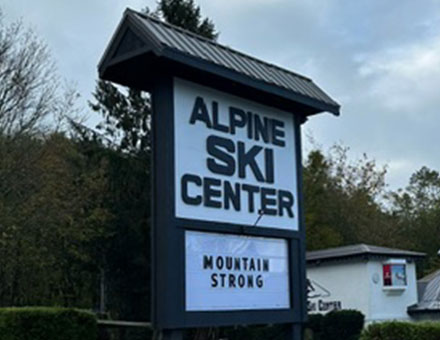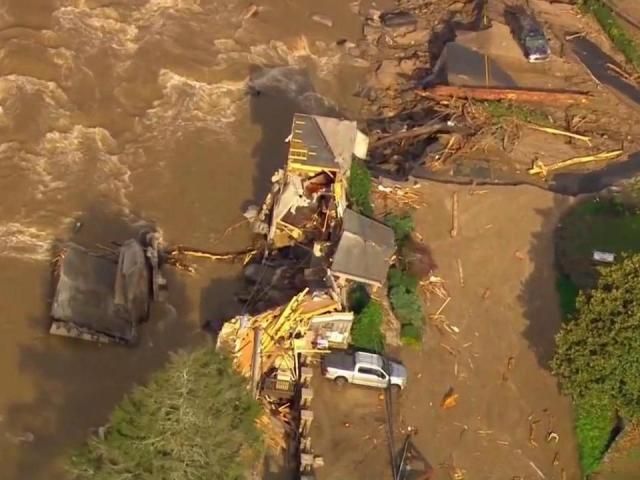One of the Ski Divas I know lives in eastern TN, quite close to the NC border. She retired a few years ago from being a ski patroller at Beech Mountain (near Boone, Banner Elk). She's okay. She found this post on Facebook.
* * *
Hurricane Helene: A note to friends outside of the South.
We live in Greene County, East Tennessee. Our county’s southern border is the Tennessee-North Carolina state line that runs along the heights of the Appalachian Mountains. We are within the hardest hit region of the U.S.
The questions I have been hearing a lot is why was this so bad, and why weren’t people prepared. I’ll try to answer those questions in the following post.
Hurricane Helene was the strongest hurricane (in recorded history) to hit the Florida panhandle region. It is the deadliest hurricane to hit the United States since Hurricane Katrina in 2005.
The death toll is over 160 so far. We are still finding bodies, and there are still many, many people missing as I write this today six days after the hurricane hit land.
I work in the emergency department at Greeneville Community Hospital. The hospital itself has been evacuated because we have no water in the majority of the county. We are still running our emergency department as a critical access site for our community. Fortunately, I have a well and didn’t lose electricity for long. I was able to haul water in a 300 gallon tote in the back of my truck to the hospital for the first few days so we could flush toilets and wash hands. It took a few days, but we now have porta-potties and water tanks on trucks to keep the emergency department running.
Under an hour from our hospital to the east, Unicoi County Hospital was flooded requiring patients and providers to be rescued from the roof via helicopter.
Under an hour from our hospital to the south, over the mountains, Asheville, NC has been hit particularly hard.
But why was this region hit so hard?
First, we had a lot of rain before Hurricane Helene even showed up. Depending on the area, we had 7-11 inches of rain in the week before the first storm clouds of the hurricane arrived. This rain saturated the ground and filled ponds and streams.
Then the hurricane arrived. She barreled her way up through the panhandle of Florida, quickly shot through Georgia, and then slowed down and stalled over North Carolina and East Tennessee. And that’s right where we live.
The reason she stalled involves atmospheric pressure conditions that I don’t fully understand, but the result was that this hurricane dropped 20 inches to over 30 inches of rain in some areas… that’s an estimated 40 trillion gallons of rain.
How much is 40 trillion gallons of water?
40 trillion gallons of water is enough to fill the Dallas Cowboy’s stadium 51,000 times.
40 trillion gallons of water is enough to cover the entire state of North Carolina with 3.5 FEET of water.
40 trillion gallons of water is enough to fill 60 MILLION Olympic-sized swimming pools.
40 trillion gallons of water is 619 DAYS of water flowing over Niagara Falls.
So this is an unprecedented amount of rain already falling on an area that had just received ground-saturated rain.
But it wasn’t just the amount of rain, it was the geography of where that rain fell.
The southeastern slopes (of western North Carolina) and the northwestern slopes (of East Tennessee) acted as funnels or rain catchments that directed all this water downhill and concentrated it into streams and rivers running into the valleys. It overflowed these streams and rivers causing massive flooding.
How much flooding?
The French Broad River usually crests at 1.5 feet… but it reached 24.6 feet during the storm.
The Nolichuckey River rose to almost 22 feet. The Nolichuckey River Dam in Greene County, during the peak of the flooding, took on 1.2 MILLION gallons of water per SECOND. Compare that to Niagara Falls which peaks at 700,000 gallons per second. Fortunately, this dam held… but barely, with damage.
Consequences.
The flooding, and all the things the flooding carried with it (large trees, vehicles, buildings, etc.) caused widespread damage. It destroyed homes and businesses. It destroyed roads and bridges. It knocked out power.
This isolated many places for days and days from normal rescue efforts and evacuation plans.
Here in Greene County, the flooding destroyed the intake pump for the county’s primary water supply. We hope they will be able to bring in a temporary pump to bypass the damaged system, but that still may take a couple weeks. In the meantime, most people in the county have no clean water for drinking, washing hands, or bathing, and no water for sanitation.
I have taken care of people in the emergency department who had their homes literally washed away. Everything they own, other than the clothes on their back, has been lost. Many friends have had their homes almost destroyed by flooding and their houses are filled with mud and debris.
And this is just in my immediate area. Other places around us have unfortunately been hit harder.
Why weren’t people prepared?
No one in the mountains of North Carolina or East Tennessee prepares for a hurricane.
It’s kind of like asking why someone in Iowa doesn’t prepare for a tidal wave or why someone in Florida doesn’t prepare for a blizzard. It’s not what happens, like ever.
This was a combination of already rain-saturated ground before the hurricane hit, the hurricane/storm stalling over this region dumping unprecedented amounts of rainfall in a small area, and the geography of mountains channeling and concentrating all this water into the valleys below that created a perfect storm, so to speak, of conditions that caused this disaster.
It couldn’t have been prevented or prepared for.
Please feel free to share this. Hopefully it answers some questions and provides a better understanding of what has happened and why it is so devastating.
* * *






